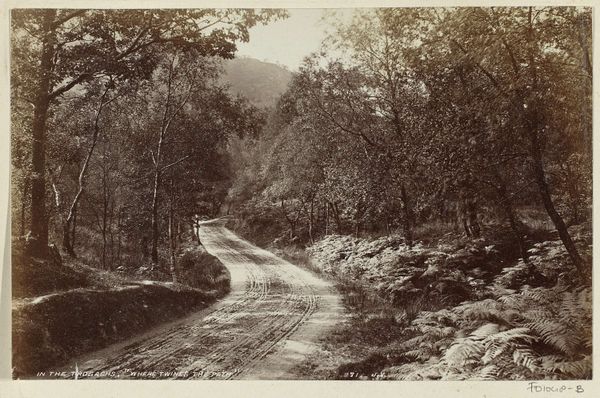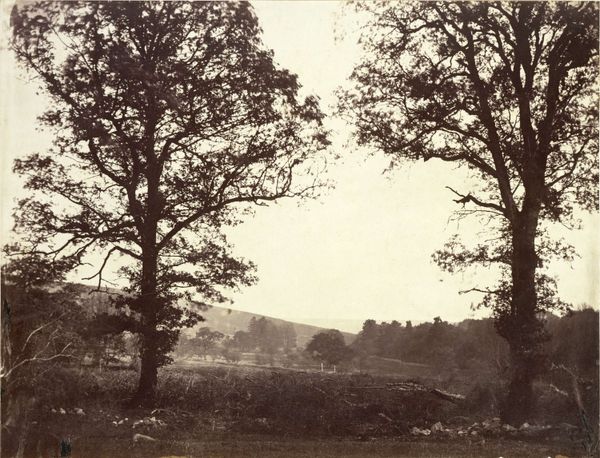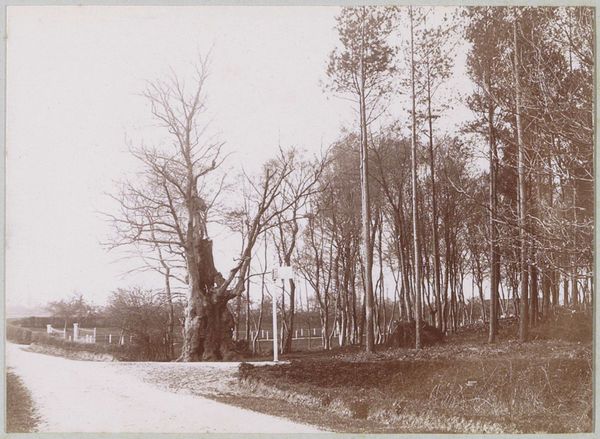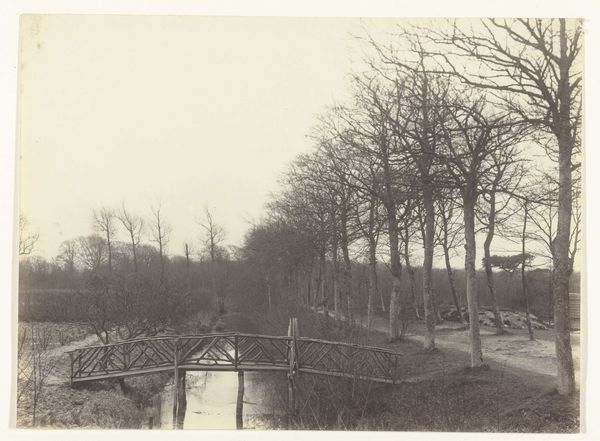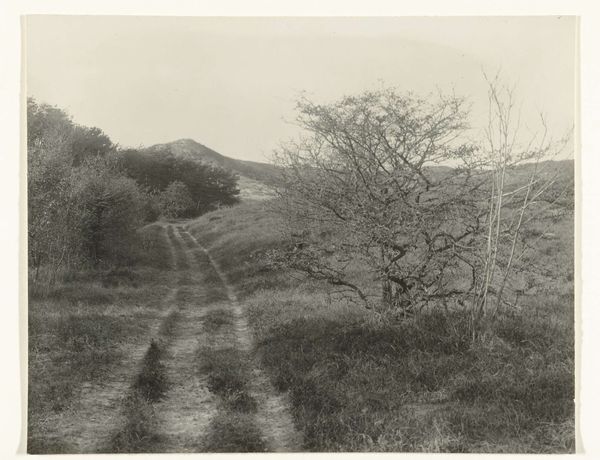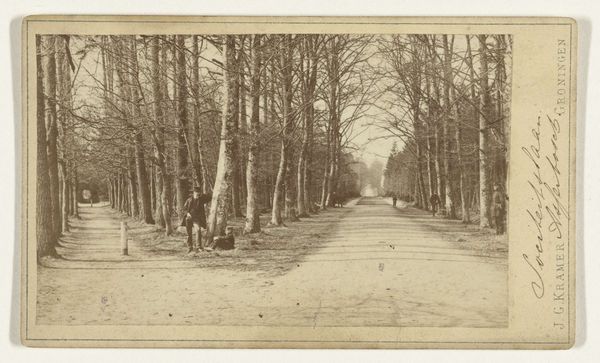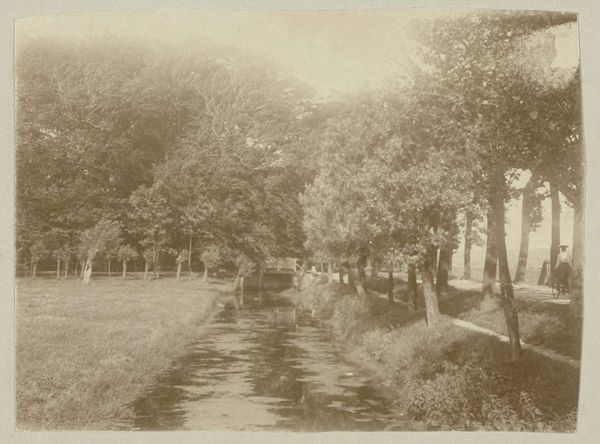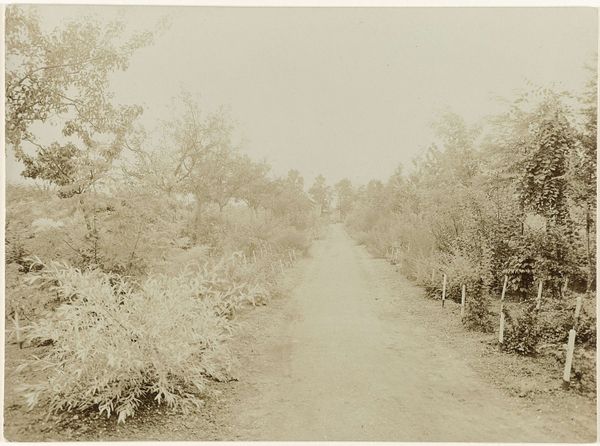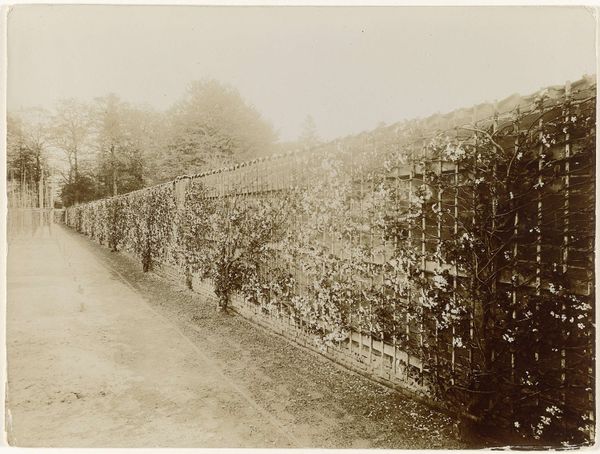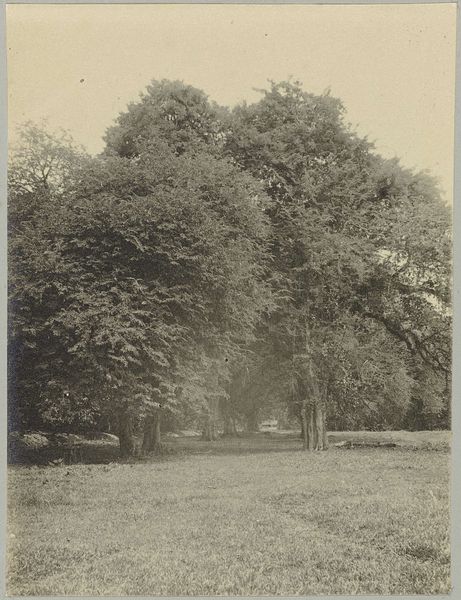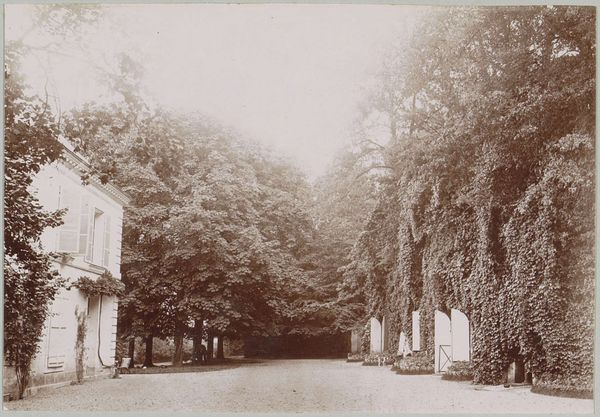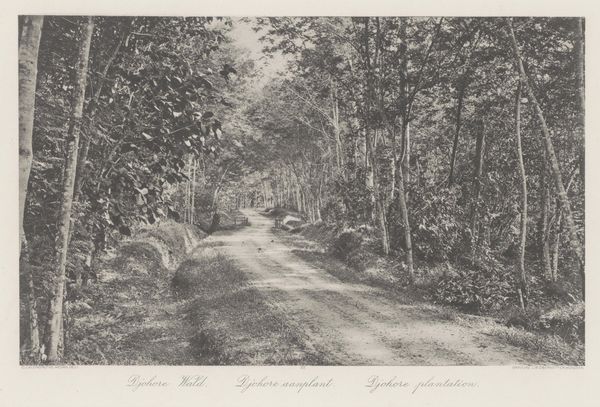
photography
#
pictorialism
#
landscape
#
nature
#
photography
#
realism
Dimensions: height 170 mm, width 217 mm
Copyright: Rijks Museum: Open Domain
Curator: This photogravure by Richard Tepe, taken sometime between 1900 and 1930, offers a glimpse into the 'Eternal Lane' in Bergen, a town in North Holland. Editor: It's immediately evocative. The monochrome palette, the perspective drawing you into the depths of the lane, it speaks to a quiet solemnity. It feels very contained. Curator: Contained, yes. It's interesting to consider the title, too. "Eternal Lane." Is it a physical place or a metaphor, suggesting a journey that never ends? The symbolism of paths and roads is a deep-rooted cultural one. Think of the cyclical nature of seasons or of life itself. Editor: Absolutely. I am compelled to think about class and land ownership at the turn of the century. Who is granted access to this "Eternal Lane" and whose labor maintains its timeless appearance? Who is this “eternity” really for? There's a visual privilege embedded within its aesthetic appeal. Curator: Tepe was known for his landscapes and portraits, favoring soft focus, evocative compositions rooted in realism yet tinged with pictorialism. In his role with the Butz & Co. photography studio in Amsterdam, his photographic practice was primarily commercial but his personal interest appears drawn to landscape and the aesthetic traditions of that period. Do you find elements of Romanticism present in this piece? Editor: Yes, there is the distinct trace of a Romantic sensibility. That is partly, I think, because of how starkly depopulated it appears; nature dominates this realm, creating this feeling of isolation, if not even quiet desperation. It is a lane going somewhere but without clear destination, implying an alienation which I suspect resonated deeply at the time given rapid industrialization. Curator: It also presents an intriguing duality, with the stacks of firewood neatly arranged on one side, contrasting against the uncultivated growth on the other. Does that evoke ideas of use and preservation for you? Of the controlled and uncontrolled? Editor: I am struck by how those firewood stacks signify a particular kind of interaction with the land; not merely of existing in nature but the way humans exert themselves on the land, stake claim to it and also reshape it in lasting ways. This image is more dynamic, more alive and complicated, than I had first assumed. Curator: And for me, exploring the symbolism, from the eternal path to the crafted stacks of wood, reveals an interplay between the mundane and the timeless, urging us to reflect on continuity. Editor: Yes, and thinking through those contradictions allows us to understand how concepts such as landscape are deeply woven into socio-historical processes.
Comments
No comments
Be the first to comment and join the conversation on the ultimate creative platform.


